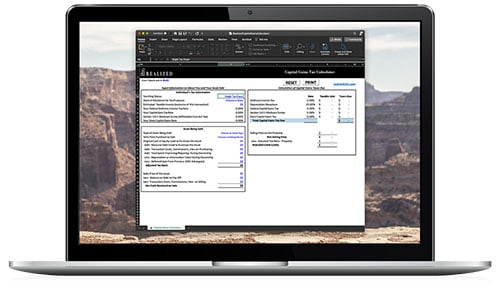
The Qualified Opportunity Zone (QOZ) program was created by the Tax Cuts and Jobs Act of 2017 to encourage long-term investment in designated communities known as Qualified Opportunity Zones. QOZs are also required to be either new developments or substantial renovations must be made to existing buildings.
To incentivize investors, QOZ programs can also provide certain tax benefits to its investors. The QOZ program also pertains to gains from the sale of any asset, not just real estate. Additionally, only the gains are eligible for special tax treatment. Any cash or non-gains from the basis can still be invested; however, it won’t receive tax benefits.
Potential Tax Benefits
The QOZ program provides three main potential tax benefits:
- Defer the inclusion of capital gains invested in a Qualified Opportunity Fund (QOF) as taxable income until December 31, 2026, or the date you sell your investment, whichever comes first.
- Reduce the taxable gain amount through step-up in basis by 10%, if held at least 5 years before December 31, 2026.
- Eliminate any capital gains taxes on the appreciation of the investment in the QOF with no reinvestment requirements, if held at least 10 years.
Qualified Opportunity Zone Investment vs. Non-Qualified Opportunity Zone Investment
Let’s say you have $2 million of capital gains to invest, and you put half into a Qualified Opportunity Zone investment and the other half into a non-Qualified Opportunity Zone investment. Just by the deferral, you start with significantly more money in a QOZ when looking at the after-tax investment. While the benefit is obvious, many still wonder if deferral is worth the effort.
When the reinvestment is sold, assuming you reinvested your after-tax proceeds, you will owe taxes on the gains from that sale. With a QOZ investment, the deferral keeps more of your money at work for a longer period of time.
QOZ Timeline
Like the 1031 exchange, QOZs also follow a strict timeline. Let’s use a quick example:
You sell an asset in 2021 and decide to invest gains into a QOZ. After the sale, you have 180 days to reinvest eligible gains into a Qualified Opportunity Fund. The investor’s basis is initially marked at zero and after five years, the investor received a 10% step-up in basis, which reduces tax liability by 10%. The capital gains tax from the 2021 sale is then due at the end of 2026 and payable in 2027. After an investment period of at least 10 years, which would be 2031 in this example, any future gains are completely eliminated with no reinvestment requirements.
December 31, 2026, is also the last day to invest in the QOZ program. Many investors choose to exit the program as soon as they get the full tax benefits; however, the QOZ program actually runs through the end of 2047. There are some QOZ investment vehicles that allow you to take advantage of this longer holding period, meaning there’s potential to grow your investment for 26 years without tax liability.
QOZ Date Extensions
IRS Notice 2021-10 extended the deadline to March 31, 2021, for any investor whose 180-day investment period ended between April 1, 2020, and March 31, 2021. Additionally, any type of gain realized on or after October 4, 2019, is still eligible for the tax benefits under the QOZ program until March 31, 2021.
K-1 partnership gains also have three different options for calculating the 180-day window:
- The date the asset is sold
- The last day of the partnership tax year
- The date the partnership tax return is due
Evaluating QOZ Opportunities
Evaluating a QOZ opportunity is not as simple as it may sound. QOZs have a lot of moving parts and meaningful due diligence can be tough — especially when you’re comparing multiple options. QOZs are also long-term investments with relatively large dollar amounts. Because this is a relatively new investment structure, there aren’t too many resources available to the average investor and it’s not always the easiest investment option to navigate on your own.
To learn more, watch the full webinar, available here.
This material is for general information and educational purposes only. Information is based on data gathered from what we believe are reliable sources. It is not guaranteed as to accuracy, does not purport to be complete and is not intended to be used as a primary basis for investment decisions. Realized does not provide tax or legal advice. This material is not a substitute for seeking the advice of a qualified professional for your individual situation. All real estate investments have the potential to lose value during the life of the investment. The actual amount and timing of distributions paid by programs is not guaranteed and may vary. There is no guarantee that investors will receive distributions or a return of their capital. Costs associated with the transaction may impact investor’s returns and may outweigh the tax benefits. An unfavorable tax ruling may cancel deferral of capital gains and result in immediate tax liabilities.


